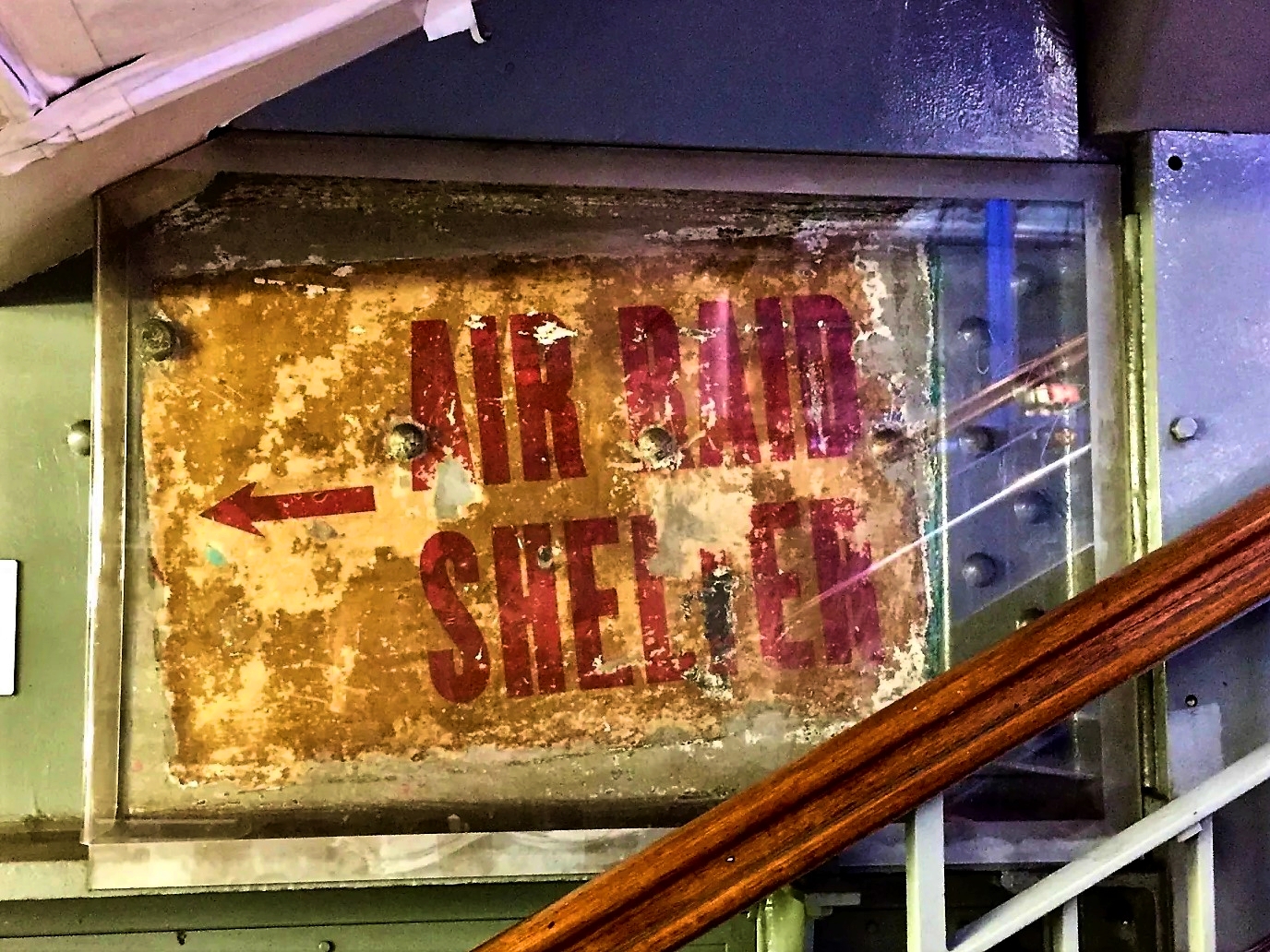QUICK, TAKE COVER!

During the 2014 refurbishment of Town Hall station, construction workers exposed this sign which directed people trapped in the city during WWII towards the safety of an underground air raid shelter. This is a grim reminder of the genuine threat Sydney locals endured in the early 1940s, as the threat from the Japanese grew. This threat became reality when Sydney was attacked by midget submarine in 1942.
The shelters were the idea of the National Emergency Service (NES) who were formed in 1939 to coordinate protection for Australian residents. As a result, Sydney soon saw a number of air raid shelters being built. These included utilising the city’s underground railway network
The larger city shelters included the tunnel to the west of Circular Quay. This was constructed in 1918 but not used for trains until 1957. It was converted into a shelter in 1941. A deep square in front of Customs House at Circular Quay also provided a 35cm concrete shelter for up to 500 people.
The most well-known bomb shelters were the unused tunnels at St James station intended for the Eastern Suburbs line built in the 1920s. This shelter could be accessed via an entrance and steps from within Hyde Park. The tunnels had room for 20,000 people and were also used as a RAAF headquarters. Deep with the tunnels there still find messages from the armed forces of the time scrawled on the tunnel walls.
Today it is hard to find evidence of shelters around Sydney. There are some located at Luna Park, Eveleigh railway workshops, Cockatoo Island and the Waterloo Town Hall. It is a disgrace that we don’t have more reminders of them and what must have been a frightening time of our history.
IMAGE CREDIT: Simon Phillips
